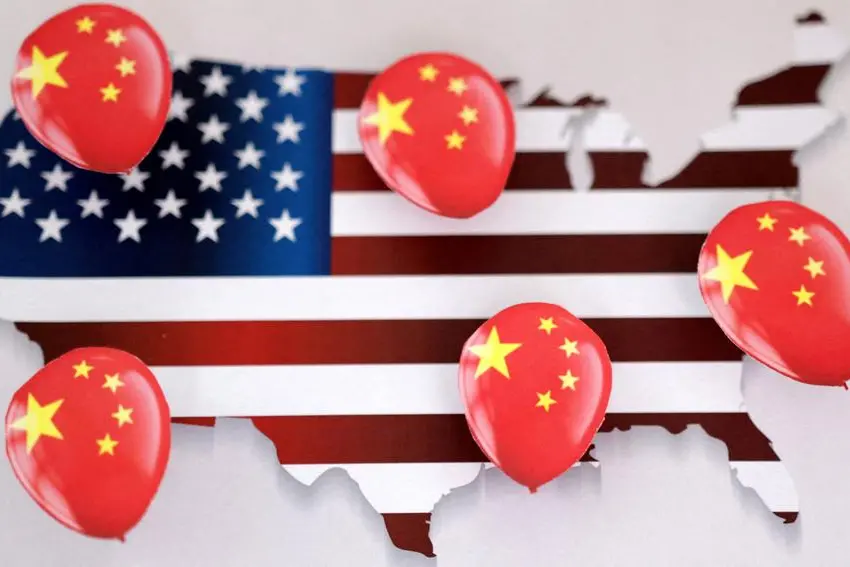PHOTO
CAMBRIDGE – Over the past few years, China has significantly expanded its economic footprint in South America, overtaking the United States as the continent’s largest trading partner. Despite US President Joe Biden’s strong commitment to countering China’s geopolitical ambitions, he has largely overlooked its growing presence in his own neighborhood. This is puzzling and alarming, not least because of South America’s crucial role in the fight against climate change.
Earlier in April, Brazilian President Luiz Inácio Lula da Silva called on the US to stop “encouraging” the war in Ukraine. His statement was just the latest example of waning US influence in the region – and the Biden administration’s failure to address it.
Americans’ ignorance of South America is something of a cliché. In 1982, after a tour of the region, then-President Ronald Reagan famously said that he was “surprised” to discover that South America is made up of multiple individual countries. His comment reflected a widespread lack of knowledge about a diverse continent with a combined population of 430 million people. With abundant mineral deposits, vast agricultural land, and more than half of the world’s remaining tropical rainforest, it is no surprise that China has taken a keen interest in South America.
The feeling is mutual. China is not the purely malign influence that the Soviet Union was, despite some US politicians’ desire to equate the two. China pays well for the resources it acquires from South America, and it has emerged as a major lender, providing indebted countries with much-needed financing, albeit generally with strings attached (such as buying from China) and with little regard to the anti-corruption guidelines that the World Bank and the International Monetary Fund insist on. Then again, China has not been caught red-handed instigating coups as the US has on multiple occasions in the last century.
Regardless, the environmental impact of China’s presence in South America is profoundly worrisome. The country’s insatiable appetite for soy has been a major driver of deforestation in Brazil and the loss of pasture land in Argentina. Moreover, its interest in the continent reflects its growing need for water, which is still plentiful in Latin America but scarce in China.
Ultimately, the US and Europe must acknowledge that addressing global warming would necessarily require the cooperation of countries like Brazil in preserving rainforests and shifting to renewable energy. While China undoubtedly recognizes the importance of combating climate change, its immediate goal is to overtake the US as the world’s largest economy and establish itself as a coequal power; achieving net-zero emissions and reducing South America’s carbon footprint are not among its top priorities.
Ironically, one reason the US tends to overlook Latin America is that it has been relatively peaceful since the nineteenth century. The Monroe Doctrine, established in 1823, placed all of Latin America within the US sphere of influence and has effectively prevented foreign powers from gaining a foothold there ever since. France’s intervention in Mexico in the 1860s, under Napoleon III, is generally considered the last major European attempt to establish a permanent Latin American presence. It was not until a century later that the Soviet Union escalated tensions by placing nuclear weapons in Cuba and bringing the world to the brink of nuclear war.
As US economic influence erodes, its ability to prevent foreign militaries from establishing a presence in South America is increasingly in jeopardy. China has already built a space observation station in Patagonia and is now pressuring Argentina to build a naval base. Given that Argentina is near debt default, with inflation is soaring past 100%, and that a populist government is in power, China could ultimately get its way. Venezuela – once favored by the American left – is also extremely susceptible to Chinese (and Russian) influence after decades of disastrous economic policies.
Although Argentina and Venezuela have experienced the most widely publicized economic downturns in South America, the COVID-19 pandemic has slowed growth and exacerbated inequality in other countries as well. Moreover, as Lula’s comments on Ukraine suggest, the continent-wide leftward shift could result in foreign policies that are not aligned with US interests.
The Biden administration must step up its efforts to counter China’s influence in South America. By helping South American countries improve their education systems, boost savings to allow for higher public investment, and implement productivity-enhancing structural reforms, the US could contribute to putting the continent on the path to long-term economic prosperity. And, to support South America’s switch to renewable energy, the West more broadly must be willing to provide debt-distressed, cash-strapped governments with large-scale grants instead of loans. Given China’s expanding global reach and South America’s importance for the green transition, the US can no longer afford to take its southern neighbors for granted.
Kenneth Rogoff, a former chief economist of the International Monetary Fund, is Professor of Economics and Public Policy at Harvard University.
Copyright: Project Syndicate, 2023.
www.project-syndicate.org





















